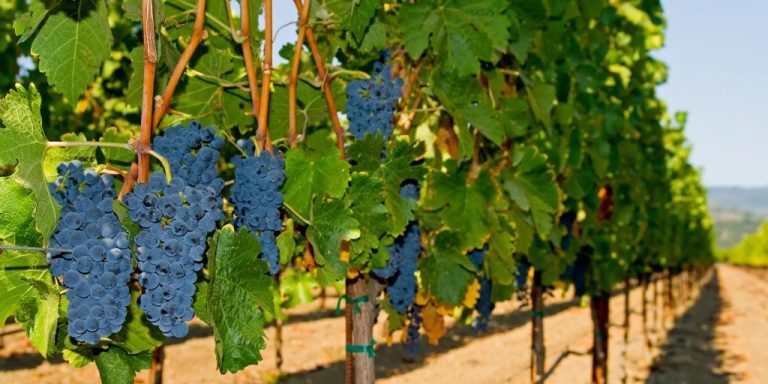A report published by National Public Radio (NPR) on September 9 asked this question: Can America's favorite red wine withstand climate change? The answer is yes, even though the story wrongly suggests the opposite. Data shows that Napa Valley grapes have experienced hotter temperatures in the past, and despite more than 30 years of global warming, grape production in the region has actually increased.
Here are some excerpts from the article:
But increasingly severe heat waves are taking a toll on grape varieties, especially during late summer ripening. As temperatures continue to rise, the wine industry is slowly facing a future in which Napa may not be the premier Cabernet Sauvignon region it once was.
…
The vineyard is already located in Napa Valley's hottest northern end, but extreme heat in recent years has set off alarm bells. A late summer heat wave in 2022 brought temperatures in the vineyards to just under 120 degrees, she said.
“When it gets that hot, the vines are done,” she said. “They will go into hibernation and when that happens, they will no longer mature.”
First, author Lauren Sommer conflates short-term heat waves with long-term climate change. Second, according to temperature records, Napa Valley set a new high temperature record of 114°F on September 6th In 2022, temperatures are just one degree higher than the global warming record high of 113°F set in 1961, 61 years ago.
A 1 degree difference on one day in 61 years does not represent climate change, but simply natural weather variation. Weather and climate operate on different schedules. Figure 1 below, produced by the National Oceanic and Atmospheric Administration (NOAA), shows the monthly average high temperatures in September. Apparently, Napa County has experienced many hot Septembers in its history. Some are even higher than the average for the entire month of September 2022:
Note that many past Septembers have had average monthly temperatures higher than or equal to September 2022.
In a chart provided by NOAA, they show that September 2022 was not unusual at all, with the highest temperature ranking 121st out of 129 years, indicating that the previous 8 Septembers were hotter:
In addition, red grape yield data shows that production has not been affected by recent temperatures. Figure 3 below tracks California grape production, with Napa in green, showing steady growth in harvested tons, not just in the Napa region, but across all regions:
If long-term climate change were actually harmful to wine grape production, the data in Figure 3 would certainly appear, but this is not the case. Climate change does not appear in the form of single-day high temperatures, as NPR confuses, but in the form of sustained increases over time.
Data suggests that NPR's Lauren Sommer may have had too much wine when she wrote that story, or, more likely, she didn't before she started writing about everything going to hell with climate change Investigate actual temperature and grape yield data for the narrative; choose her anecdote to fit the narrative.
We could add this under-researched story to dozens of similar ones climate realism Blame the media for erroneous or selective reporting. Apparently wine grapes can and have withstood climate change, and the media is just reporting baseless horror stories. NPR's coverage of grapes seems more of an expression of the “sour grapes” of many alarming climate scare stories being debunked than factual reporting on any of the dangers facing grapes and wine production.

Anthony Watts
Anthony Watts is a senior fellow in environment and climate at the Heartland Institute. Since 1978, Watts has been in the weather business both in front of and behind the camera as a live television meteorologist and currently oversees daily broadcast forecasts. He created television weather graphics presentation systems, professional weather instruments, and co-authored peer-reviewed papers on climate issues. He runs the world's most viewed climate website, the award-winning wattsupwiththat.com.
Originally published in Climaterealism
Relevant
